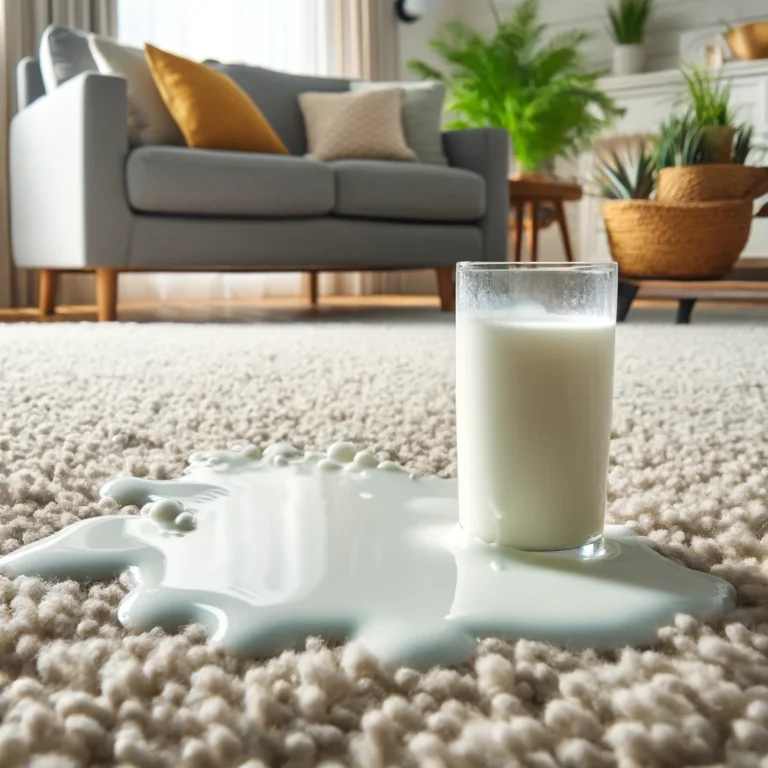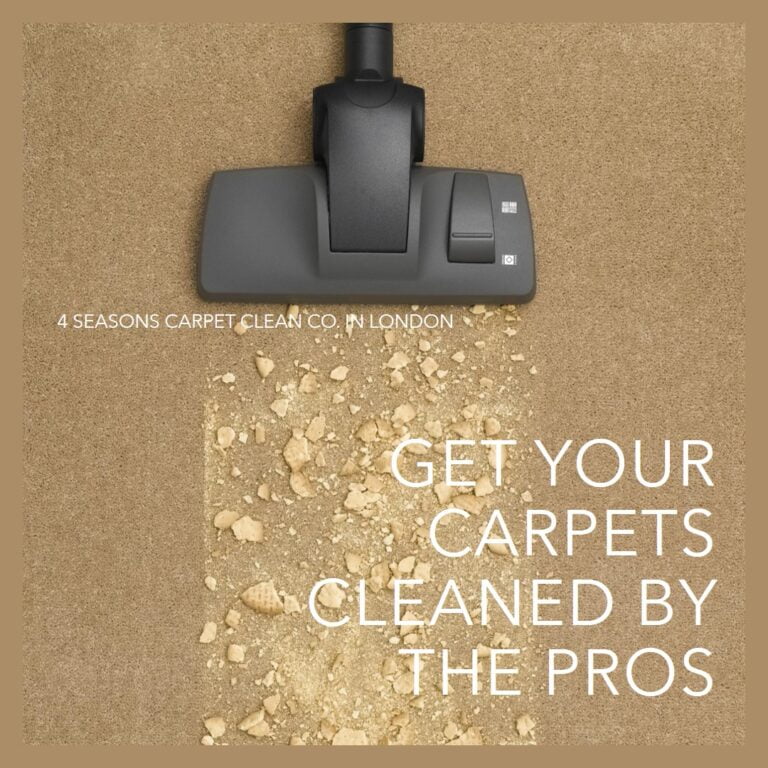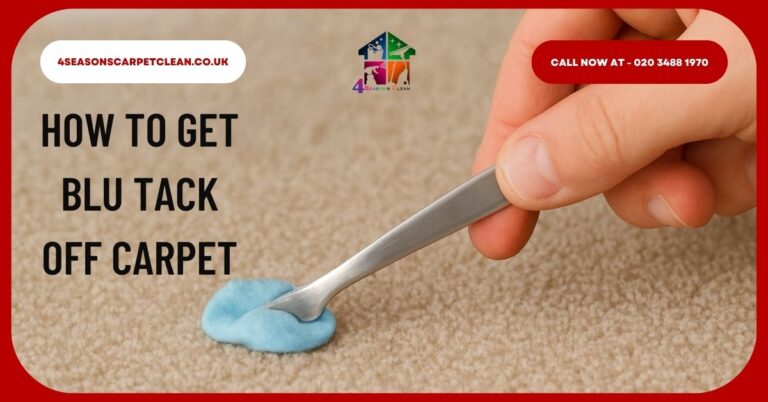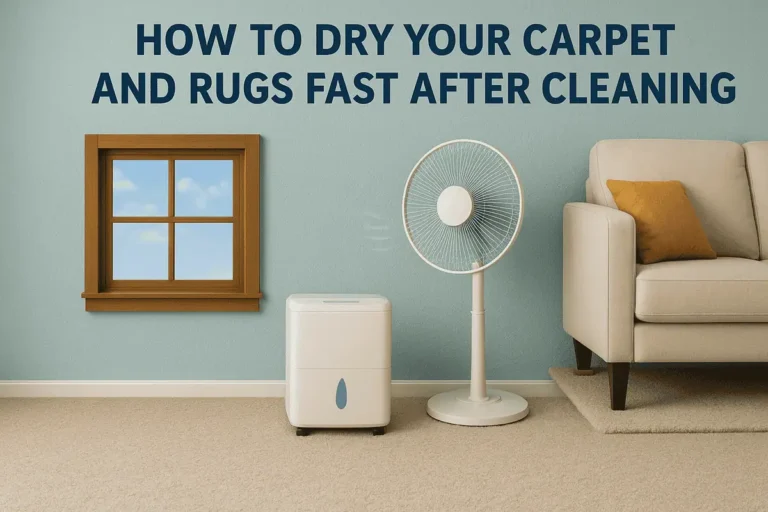Table of Contents
When it comes to keeping your carpets clean and fresh, two popular methods often come to mind: shampooing and steam cleaning. Both techniques have their pros and cons. Choosing between them depends on factors like the type of carpet, how dirty it is, and your cleaning needs.
In this guide, we will look at the pros and cons of each method. This will help you decide which approach is best for your carpets.
Understanding Carpet Shampooing
Carpet shampooing is one of the oldest professional carpet cleaning techniques still in use today. This method uses a foaming substance on the carpet. Then, a brush machine works it into the fibers.
How Carpet Shampooing Works
The process begins with a thorough vacuuming to remove loose dirt and debris. Next, someone uses a special shampoo on the carpet. They scrub it with a rotary floor machine that has brushes. The shampoo creates foam that helps to break down dirt and stains embedded in the carpet fibers.
After the shampoo has had time to work its magic, someone typically removes it using a wet vacuum. Once the carpet dries completely, we vacuum it again to remove any remaining residue.
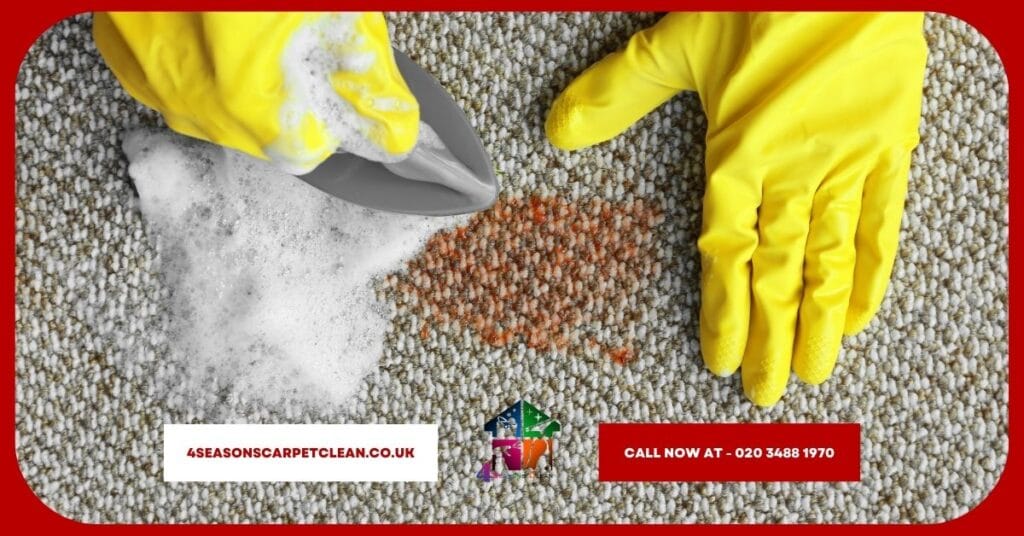
Advantages of Carpet Shampooing
- Shampooing works well for dirty carpets, removing dirt and get rid of tough stains.
- Deep cleaning action: The mechanical agitation of a brush machine helps to loosen and remove dirt and debris that have become embedded deep within the carpet fibers.
- Different cleaning solutions: There are many shampoos available. They help clean specific types of stains or carpet fibers.
Carpet Shampooing Drawbacks
- Residue: One of the main drawbacks of shampooing is the potential for residue to be left behind in the carpet. This residue can attract dirt more quickly after cleaning, leading to faster resoiling.
- Long drying time: Carpets cleaned this way often take several hours or even a whole day to dry. This can be a hassle for busy homes or businesses.
- Risk of over-wetting: If done incorrectly, shampooing can over-wet the carpet. This may cause problems like shrinkage, mold growth, or damage to the subfloor.
Understanding Steam Cleaning
Steam cleaning, also known as hot water extraction, has become the preferred method for many professional carpet cleaners. Despite its name, this technique actually uses hot water rather than steam to clean carpets.
How Steam Cleaning Works
The process begins with a pre-treatment of the carpet using a cleaning solution. Then, someone injects hot water into the carpet at high pressure. This hot water, combined with the cleaning solution, helps to break down dirt, stains, and bacteria within the carpet fibers.
Immediately after injection, a powerful vacuum extracts the water along with the loosened dirt and debris. This extraction process removes a significant amount of moisture, allowing for faster drying times compared to shampooing.

Advantages of Steam Cleaning
- Deep cleaning: Steam cleaning goes deep into carpet fibers. It effectively removes dirt, stains, and allergens that stick inside.
- Sanitizing effect: The hot water in steam cleaning kills bacteria, dust mites, and other germs. This makes it a great choice for people with allergies or breathing problems.
- Less residue: Unlike shampooing, steam cleaning leaves minimal residue in the carpet, reducing the likelihood of rapid resoiling.
- Faster drying time: While steam-cleaned carpets still require some drying time, they typically dry faster than shampooed carpets.
Steam Cleaning Drawbacks
- Equipment requirements: To steam clean effectively, you need professional-grade equipment. This equipment can be costly to buy or rent for DIY projects.
- Risk of over-wetting: If not done correctly, steam cleaning can cause too much water in the carpet. However, this risk is usually lower than with shampooing.
- Not all carpet types are suitable: Some delicate or natural fiber carpets may not work well with steam cleaning. This is because of the high temperatures and moisture used in the process.
Comparing Effectiveness
When it comes to overall cleaning effectiveness, both methods can produce good results when performed correctly. However, steam cleaning generally has an edge in several areas:
- Stain removal: Deep-set stains are often better addressed with steam cleaning, while shampooing is more suitable for surface stains..
- Allergen removal: Steam cleaning uses high temperatures that kill dust mites, bacteria, and other allergens. This makes it a better choice for improving indoor air quality.
- Steam cleaning leaves less residue than shampooing. This means carpets are less likely to attract dirt quickly after cleaning.
- Drying time: Both methods need drying time, but steam-cleaned carpets usually dry faster than shampooed ones. This reduces the risk of mold and lessens disruption to your home or business.
Environmental Considerations
In today’s environmentally conscious world, the ecological impact of cleaning methods is an important consideration. Here, steam cleaning has some distinct advantages:
- Water usage: Steam cleaning typically uses less water than shampooing. While shampooing can use 20 to 50 liters per cleaning, steam cleaning often requires only 5 liters.
- Chemical use: Steam cleaning generally uses fewer chemicals than shampooing. Many steam cleaning solutions are Nature-friendly and less harmful to the environment.
- Indoor air quality: Using fewer chemicals in steam cleaning can improve indoor air quality. This is especially important for people with sensitivities or breathing problems.
Longevity of Results
When considering which method to choose, it’s important to think about how long the results will last. Here, steam cleaning often has an advantage:
- Resoiling: Because steam cleaning leaves less residue, carpets cleaned this way tend to stay cleaner for longer. Shampooed carpets may attract dirt more quickly due to leftover residue.
- Fiber preservation: Steam cleaning is generally gentler on carpet fibers than the mechanical agitation used in shampooing. This can help preserve the carpet’s appearance and texture over time.
- Frequency of cleaning: Carpets cleaned with steam cleaning may need professional cleaning less often. This is because steam cleaning deep-cleans and reduces resoiling better than shampooing.
Matching for Different Situations
While Steam cleaning is the best method, there are times when shampooing may be a better option:
- Extremely dirty or heavily stained carpets may benefit most from a combination of mechanical shampooing and specific cleaning solutions.
- Bonnet cleaning (a type of shampooing) is ideal for busy commercial areas where rapid drying times are essential.
- Delicate carpets: Some delicate or natural fiber carpets cannot handle the heat and moisture of steam cleaning. In these cases, a gentle shampooing method may be better.
Professional vs. DIY Cleaning
Both shampooing and steam cleaning can be attempted as DIY projects, but professional cleaning often yields superior results:
- Equipment: Professional-grade equipment, especially for steam cleaning, is more powerful and effective than consumer-grade rentals.
- Expertise: Professional cleaners know how to pick the best cleaning methods and solutions for various carpets and stains.
- Drying time: Professionals use strong extraction equipment to remove more moisture. This helps speed up drying and lowers the risk of mold growth.
- Warranty considerations: Some carpet warranties require professional cleaning at specified intervals, so it’s worth checking your warranty before deciding to DIY.
long-term effects of shampoo residue on carpet fibers
Shampoo residue can harm carpet fibers over time. This can hurt both the look and lifespan of your carpets. Here are the key issues:
Quick Resoiling
Shampoo residue left in carpet fibers acts as a dirt magnet. The sticky film from dried shampoo attracts dirt, dust, and debris faster than clean carpet fibers. This makes carpets look dirty again soon after cleaning, leading to a frustrating cycle of constant cleaning.
Fiber Damage
Over time, shampoo residue can cause significant damage to carpet fibers:
- Fiber breakdown: The chemicals in shampoo, particularly sodium lauryl sulfate (SLS), can break down carpet fibers over time.
- Matting happens when residue makes carpet fibers stick together. This can create worn paths in areas with heavy foot traffic.
- Loss of texture: As fibers break down and mat together, carpets lose their original texture and softness.
Color Change
Shampoo residue can lead to color change of carpet fibers in two ways:
- Yellowing: Many detergents contain additives that can cause lighter-colored carpets to yellow over time.
- Uneven appearance: Dirt builds up faster in areas with residue. This can make the carpet look uneven and patchy.
Health and Environmental Concerns
The residue left behind by carpet shampoos can have negative impacts beyond just the carpet itself:
- Allergen Growth: Residue can trap allergens like dust, pet dander, and pollen, potentially worsening allergies and breathing issues.
- Chemical exposure: Some carpet shampoos contain chemicals that may be irritating or potentially harmful with prolonged exposure.
Reduced Carpet Lifespan
These effects—more dirt, damaged fibers, and chemical exposure—can greatly shorten the life of your carpets. This means you may need to replace your carpets much sooner than if you clean them with residue-free methods.
To avoid these long-term effects, it is best to use professional steam cleaning services. These services use hot water extraction instead of shampoo-based methods. Steam cleaning leaves minimal residue and is more effective at deep-cleaning carpets without causing long-term damage.
Conclusion
In the debate between shampooing and steam cleaning carpets, steam cleaning generally comes out on top for most situations. Its deep-cleaning action and effectiveness against allergens make it a top choice for many cleaners and homeowners. It also uses fewer chemicals and dries faster.
However, the best choice ultimately depends on your specific circumstances. When making your decision, consider the type and condition of your carpet. Think about your cleaning priorities, like stain removal or allergen reduction.
To get the best results and protect your carpets, it is often wise to hire a professional cleaning service. They can evaluate your needs and suggest the best cleaning method. This could be steam cleaning, shampooing, or a mix of both.
Remember, no matter which method you pick, regular cleaning and maintenance are important. They help keep your carpets looking great and last longer. By knowing the benefits and drawbacks of different cleaning methods, you can make smart choices for your carpets. This will help keep them beautiful and healthy in your home or business for years.

